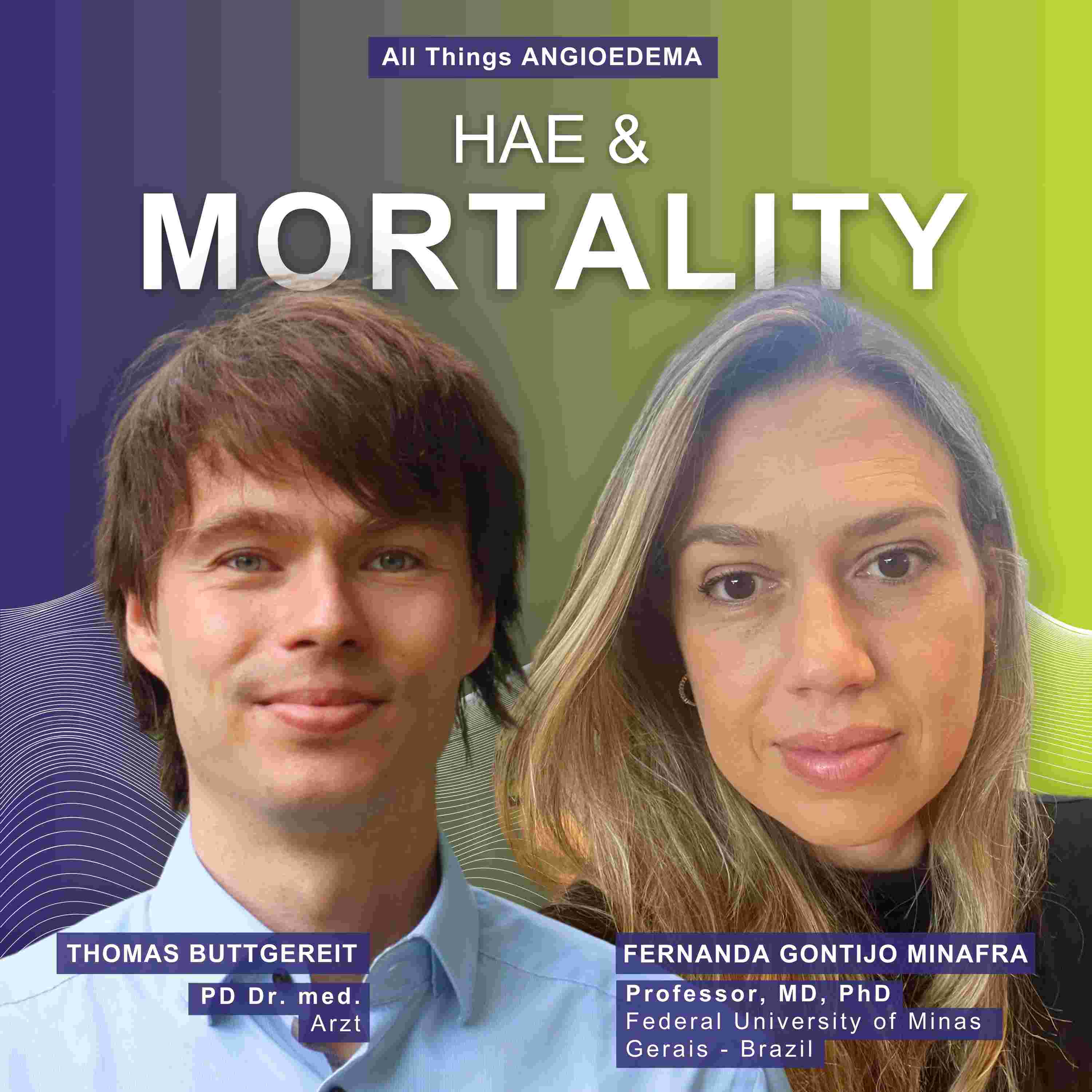

In this episode, Thomas welcomes Dr. Fernanda Minafra, allergist and immunologist at the Federal University of Minas Gerais, Brazil, to discuss one of the most concerning aspects of hereditary angioedema (HAE): mortality.
They discuss:
🔹 How often do HAE-related deaths occur?
🔹 Why is undiagnosed HAE a major risk factor?
🔹 What do global studies say about mortality rates?
🔹 What can be done to reduce HAE deaths worldwide?
Dr. Minafra shares insights from her research, including a systematic review on HAE-related deaths and a study on mortality rates in Brazil. She highlights the urgent need for better diagnosis, access to treatment, and public health policies to prevent avoidable deaths.
Join us for this crucial discussion on why early diagnosis and proper treatment are key to saving lives.
Key Learnings from the Episode
HAE-related deaths are often caused by asphyxiation due to laryngeal angioedema.
HAE mortality rates remain high in many parts of the world, especially in developing countries.
A systematic review found that 1 in 20 HAE patients has died from asphyxia.
Undiagnosed patients are at much higher risk of fatal outcomes.
Many death certificates fail to properly identify HAE as the cause of death.
HAE patients who die from asphyxiation typically lose 20 years of life expectancy.
Access to diagnostic tests and effective treatments is essential for preventing deaths.
Global collaboration through ACARE centers is needed to improve mortality data collection and patient outcomes.
Chapters
00:00 Introduction to Angioedema and Mortality
03:13 Understanding Hereditary Angioedema (HAE) and Its Risks
05:34 Research Insights on Mortality in HAE
08:21 Findings from Brazil: A Closer Look at HAE Deaths
10:47 The Impact of Diagnosis and Treatment on HAE Mortality
13:41 Current Status and Future Directions in HAE Research
Do you have suggestions for future episodes? Please provide feedback and offer your suggestions for future topics and expert selection here.
Feedback form ATA: https://forms.office.com/e/ZWxx3D4Cmr